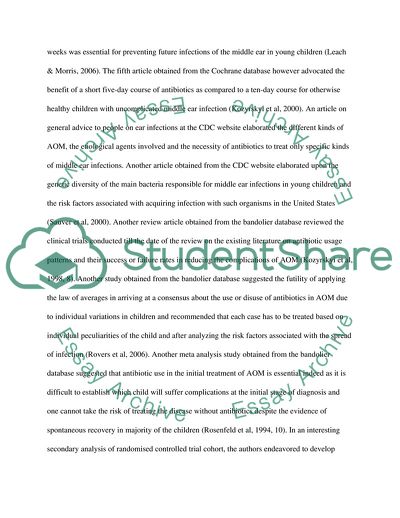Acute Otitis Media in Children Essay Example | Topics and Well Written Essays - 1500 words. https://studentshare.org/media/1732237-acute-otitis-media-in-children-should-antibiotics-be-routinely-perscribed
Acute Otitis Media in Children Essay Example | Topics and Well Written Essays - 1500 Words. https://studentshare.org/media/1732237-acute-otitis-media-in-children-should-antibiotics-be-routinely-perscribed.


